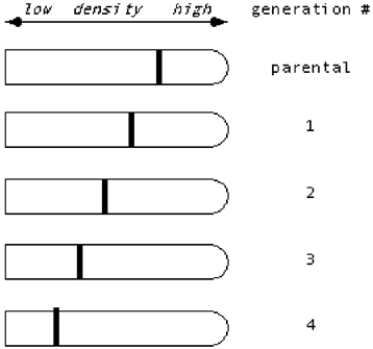Suppose Meselson & Stahl had observed the following data in their famous experiment involving a switch from medium containing 15N to 14N. What would they have concluded about the nature of DNA replication? 
A) They still would have concluded that DNA replication is semiconservative, i.e., each double helix contains one parental strand and one newly synthesized strand.
B) They would have concluded that DNA replication is conservative, i.e., one double helix contains only the parental strands, while the other contains only newly synthesized DNA.
C) They would have concluded that DNA replication is dispersive/random, i.e., each strand of each double helix contains a mixture of parental and newly synthesized sequences.
D) They would have been unable to distinguish which is correct.
Correct Answer:
Verified
Q1: The process by which an mRNA base
Q5: Semiconservative replication of DNA was established experimentally
Q7: Semiconservative replication implies that
A) each of the
Q9: An important process in the synthesis of
Q11: The duplication process of DNA is called
A)
Q11: Which of the following is NOT an
Q13: DNA replication is a challenging process because:
A)
Q14: Which of the following best describes the
Q15: When the synthesis of new DNA is
Q16: All the following describe the general mechanism
Unlock this Answer For Free Now!
View this answer and more for free by performing one of the following actions

Scan the QR code to install the App and get 2 free unlocks

Unlock quizzes for free by uploading documents